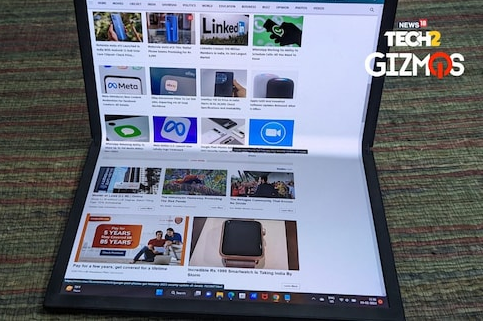Asus ZenBook Fold 17 OLED Review: The future is here and we’re excited
Foldables are definitely a bigger thing in 2023 than what we saw last year. Whether it’s smartphones or laptops, you have a variety of unique form factors that grab attention. Samsung is the undisputed leader in the foldable mobile phone segment, but the PC market is wide open for competitors who can show their worth and the value of innovation.
Lenovo was one of the brands that entered this space, and then we had the Asus ZenBook Fold 17 OLED laptop, which seems to demonstrate the virtue of the foldable PC in the future and how it could succeed. This laptop was released in 2022, but with the number of foldable devices increasing this year, we decided to give the ZenBook Fold 17 a proper shot to see if the hype is justified.
Asus ZenBook Fold 17 OLED Review: What’s Cool?
As soon as you take the ZenBook Fold 17 OLED out of the box, you realize that this device is going to be a handful. Asus has given instructions on how to use the foldable laptop, how to hold the panel and how to avoid sticking to the screen.
Sturdy build quality has become a hallmark of most Asus products we’ve tested recently, and this one is no different. But when you examine the ZenBook 17 Fold OLED, you’ll see that this is a versatile machine. You have a laptop mode (with and without a keyboard), a desktop mode, a tablet mode, a reader mode and an extended mode, which will probably give you the best use of the foldable display.
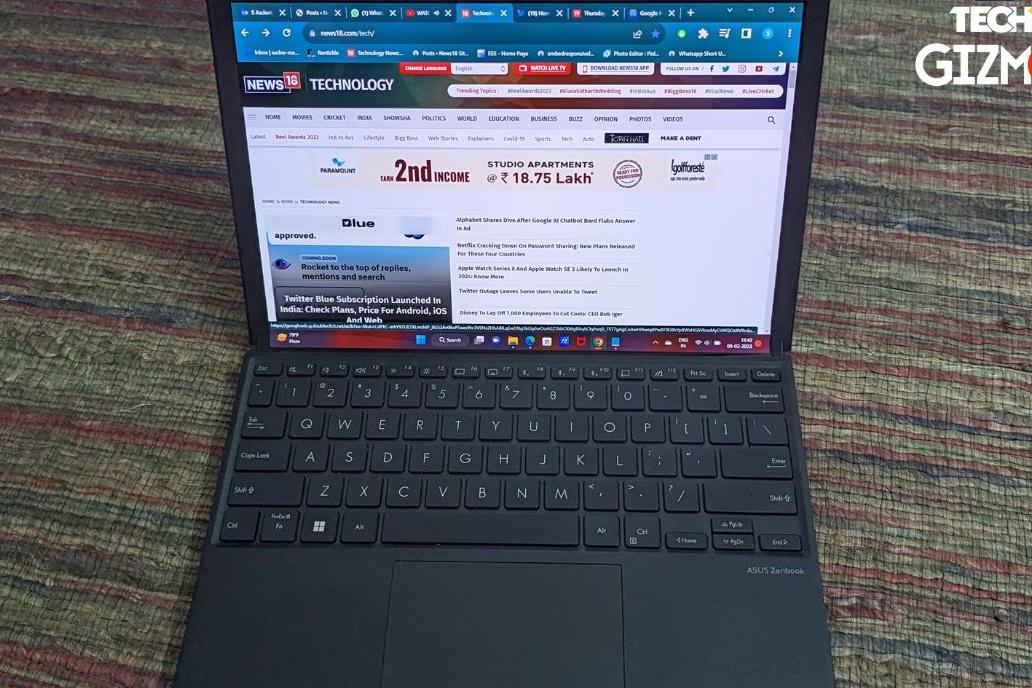
It’s also quite light for its size at 1.5kg (1.8kg with keyboard) and the military standard quality makes it even more reliable.
You can use it in traditional laptop mode with the keyboard dock attached to the screen. You can also use the virtual keyboard to get the most out of the foldable OLED panel. And if that’s not enough, you can connect the keyboard wirelessly and spread the screen for the best viewing quality thanks to the stand on the back that keeps the screen upright. The keyboard is offered in the box and needs to be charged via the USB C port, but the backup is decent.
For most of our time, we used the ZenBook Fold 17 OLED in its former state, but even in regular laptop form, the device was easy to use. The 2.5K OLED display spoiled us with the laptop so much that every other panel we used after that looked washed out and colorless.
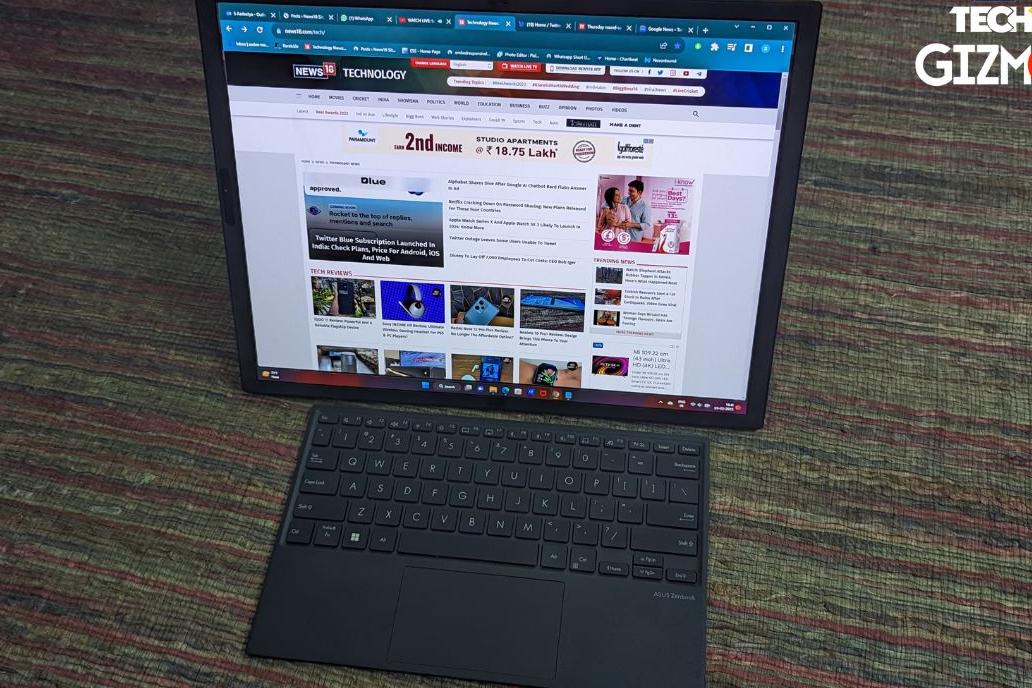
Performance is another strength of the ZenBook Fold 17 OLED, with an Intel Core i7 processor, 16GB of RAM and 1TB of SSD storage to help you quickly launch your system and apps. We used it as our primary machine for more than a week and during our time we hardly noticed the system heating up abnormally or the system freezing in any case. With all that power, it always did, and we’re happy to report a glitch-free experience.
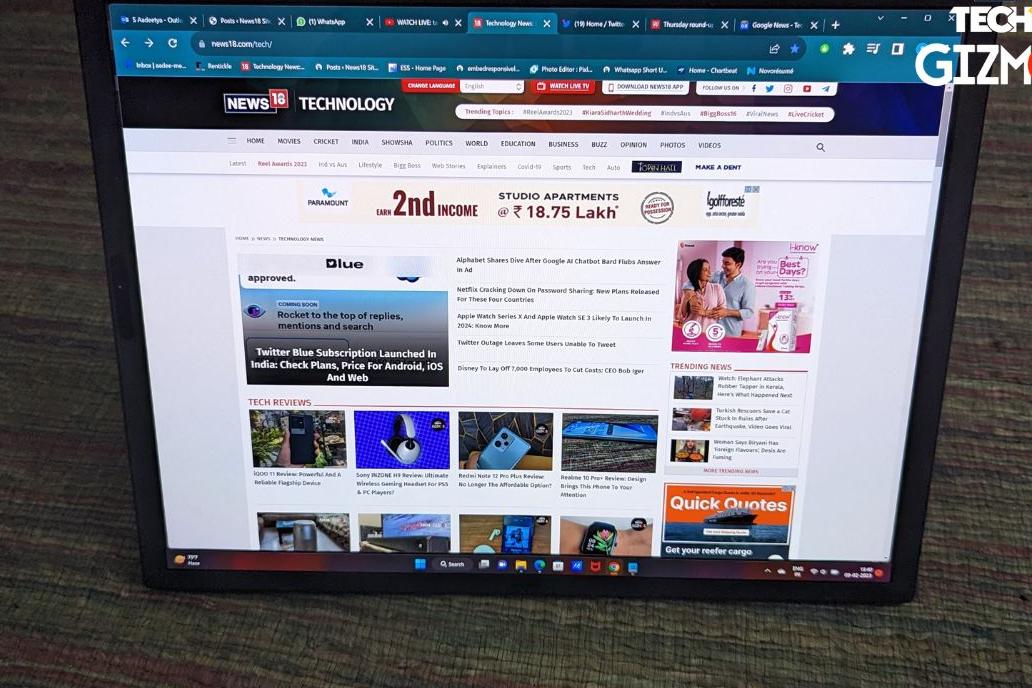
Asus has dominated displays in its laptops recently, but another thing for the company has been its focus on audio. The built-in Harman Kardon speakers live up to their name, and most of our testing was done watching movies and shows on the default speaker. Granted, it’s not bass heavy, but better than most Windows laptops on the market.
The most surprising feature of the ZenBook Fold 17 OLED was its battery life. With all this power and display quality, we expected 3-4 hours of backup at maximum duration. But it seems that the hardware tuning of the screen is done in such a way that the battery life is not affected. In our tests, we got more than 8 hours of usage time, which is quite good for a foldable form factor. The included 65 W charger also offers a quick return to full power.
Asus ZenBook Fold 17 OLED Review: What’s Not Cool?
In addition to the sturdy build quality, the Asus ZenBook Fold 17 OLED is a foldable laptop, and in that mode you have a big machine that looks like a giant in front of a MacBook Air or even a Pro. In that state, it becomes heavy, and curiously, even at these dimensions, the laptop only has one USB C port, which is used for charging and other purposes. You have a headphone jack, but connecting an external drive (without an adapter) is not possible, which is quite limiting for a PC.
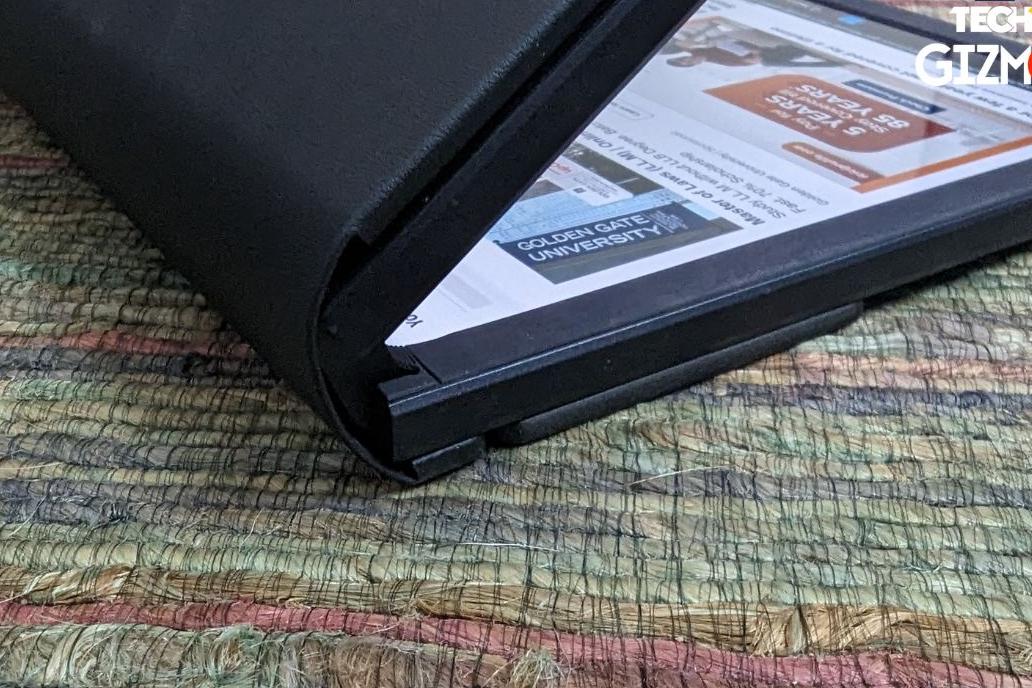
The ZenBook Fold 17 OLED is a powerful machine, but not suitable for gaming. After all, it has a 12th-gen Intel Core i7 processor with integrated Intel graphics that can handle casual games, but nothing as fancy as Call of Duty.
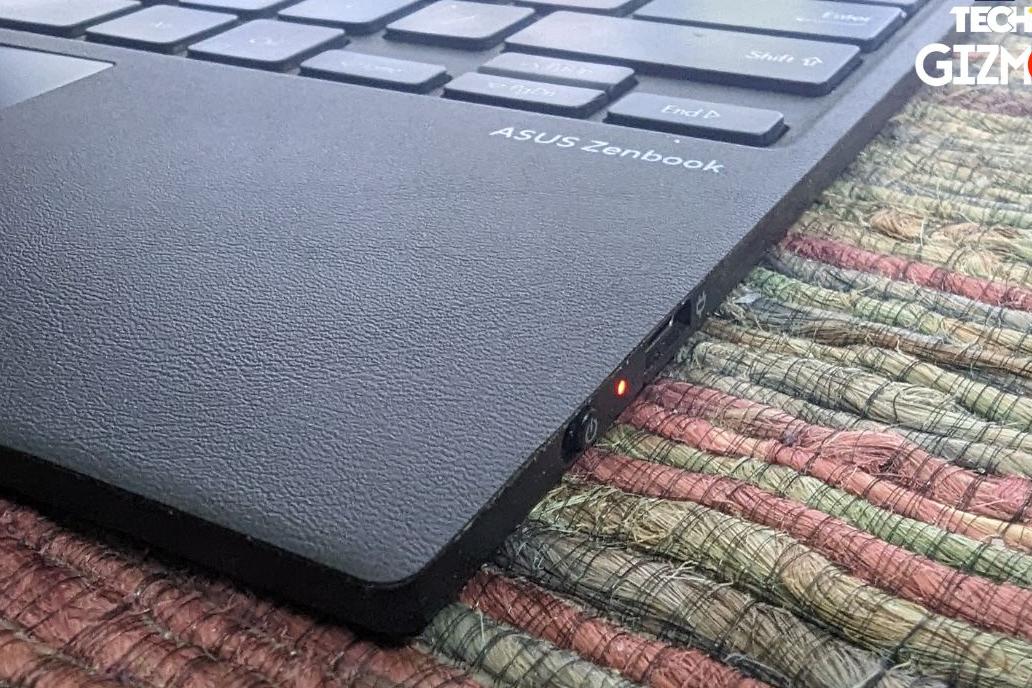
Windows 11 is powering the machine, which works fine in most cases, but we noticed that switching between different modes on the laptop lags. This suggests that Windows still has a way to go before it becomes a viable platform for a foldable platform. The supplied keyboard definitely needs work and, most importantly, backlight support. And like we said before, USB C charging and the power button on the keyboard are hard to remember. At this price, we would have liked to see the keyboard charge wirelessly when connected to a laptop. Asus has priced the ZenBook Fold 17 OLED at a whopping Rs 3,29,999, which may sound like a crazy price, but this form factor suggests the company may be getting a premium.
Asus ZenBook Fold 17 OLED Review: What we think
Asus has done a commendable job with the first generation ZenBook Fold 17 OLED, which has the largest 17.3-inch OLED screen on the market. The technology is definitely in its infancy, but the potential is there and we can see this being a popular option for content creators and users who travel a lot.
The dimensions have been taken care of well, but not close to being portable and the lack of ports was annoying. The screen is great, the speaker stands out on its own, and the performance is limited for heavy users, not just gaming. The keyboard feels more like an accessory than a part of the whole package, and there is no backlight support. Priced at Rs 3,29,999, this foldable laptop makes the right noise and shows us that PCs in the future can be exciting and not just a piece of hardware.
Read all the Latest Tech News here.

